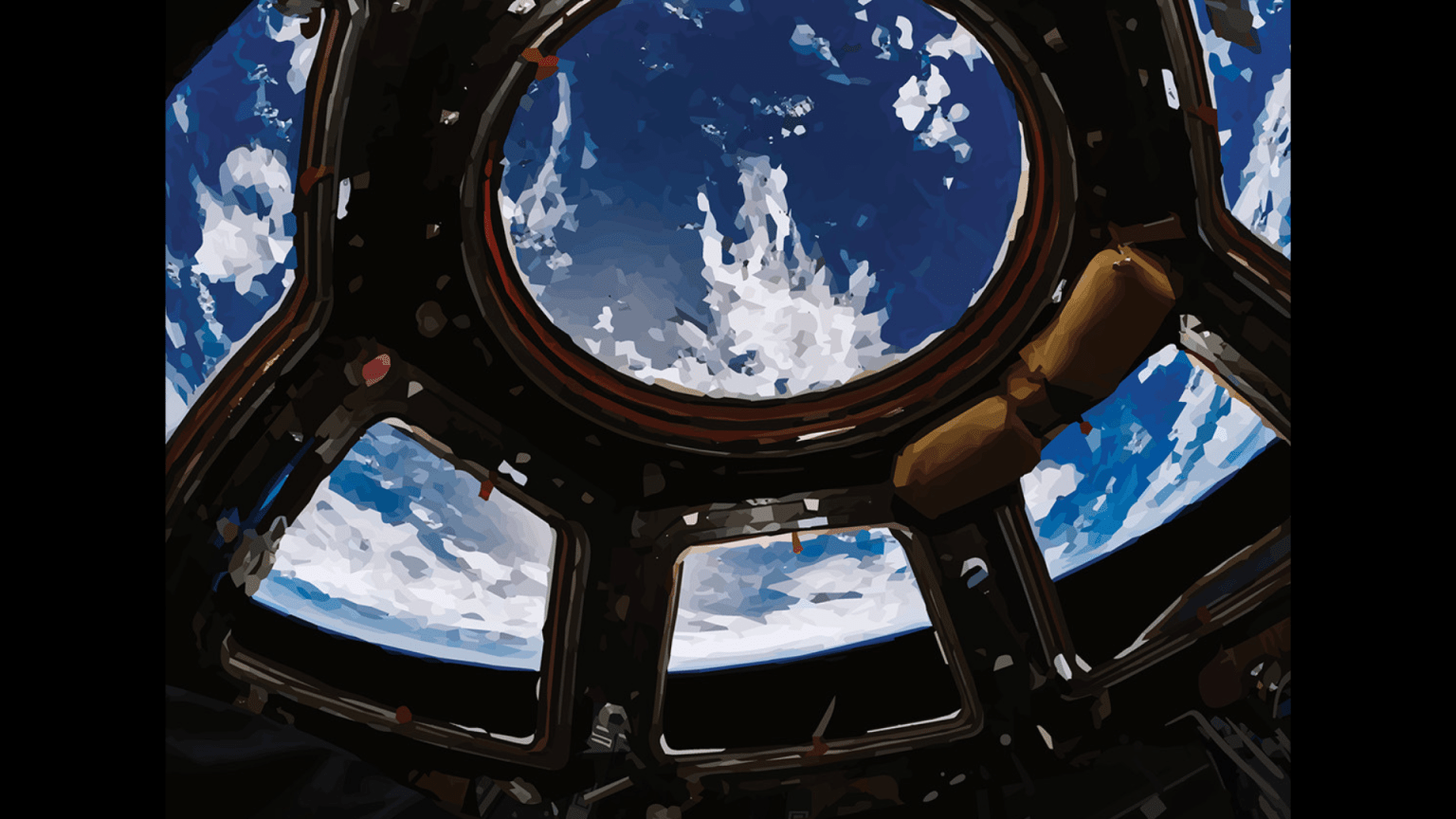The benefits derived from an orbiting laboratory are definitely not limited to space exploration. Examples range from the tangible, such as air purification and water filtration products, to the potential, such as cleaner combustion engines or medical scans that expose patients to lower levels of radiation. Some benefits arise from new scientific knowledge while others are derived from the specialized equipment needed to live in and conduct research in space. In communicating the array of benefits stemming from the International Space Station, it’s useful to sort them into four broad categories: scientific, societal, exploration, and economic.
Scientific benefits stem from knowledge gained through the growing volume of research conducted aboard station. Entering its third decade of life, the International Space Station has evolved into a robust scientific laboratory with dozens of research facilities and an array of tools and observational instruments. The space station has served as a platform for testing and validating new instruments and techniques for use in space. It has also served to refine processes for training crew and supporting them in real time as they act as the surrogate eyes and hands of scientists conducting research across every discipline of science. Additionally, engineers have gained experience designing hardware that enables experiments to run autonomously or with minimal crew interaction. As a result, both the amount of research that can be supported simultaneously and the fidelity of results has grown dramatically over the station’s first two decades of operation.
At any one time, this microgravity lab hosts hundreds of investigations spanning every major scientific discipline. External instruments gather data relevant to studies from astrophysics to climate change. Inside the station, experiments are conducted in fields as far ranging as microbiology and metallurgy. The data collected are forming new areas of scientific research, providing novel insights that cannot be obtained on Earth, and giving us a better understanding of our universe.
Societal benefits range from medical advancements already improving our lives here on Earth to intangible contributions to our global society. From neonatal care to robotic surgery, research on the station has helped create technologies used in hospital settings today. Station research has generated a more detailed understanding of the complex structures of proteins involved in disease, leading to new medical treatments and a greater understanding of many illnesses.
On the less-tangible side, station research has fostered scientific cooperation around the globe with researchers representing more than 100 countries. The space station also has helped inspire the world’s next generation of scientists and engineers. Station crew, both cosmonauts and astronauts, have connected with millions of school children through amateur radio contacts, live video downlinks, and recorded science demonstrations. Teachers connect their classrooms with the orbiting laboratory through story-time readings recorded on orbit, detailed science lesson plans, citizen science opportunities, and even flight opportunities for student-developed experiments.
Exploration benefits derived from an orbiting platform are clear: it’s the ideal test bed for demonstrating and improving technologies needed to explore farther into space and stay there longer. New power generation, air and water recycling, carbon dioxide removal, communications, and computing systems are among the exploration-enabling technologies that have been tested, proven, and continue to be improved using the station. Researchers also study how humans adapt psychologically to working in space, how best to grow plants for long-duration space missions, and more.
Supporting a continuous human presence in space has helped develop processes for preparing crew for long-duration missions in microgravity and mitigating any negative physical effects such as bone and muscle loss. Processes for supporting crew members as they conduct spacewalks for routine maintenance, replacement of worn-out parts, and even unscheduled repair of complex systems have benefited from lessons learned. They have been refined, tested, and refined again over more than two decades.
Economic benefits are derived from the new products and services resulting from space station activities. Examples of products available for purchase today range from robotic gloves to medicines and medical devices.
The station also has served as a business incubator, supporting the growing space economy by transferring the operational experience of governmental space agencies to a growing number of space-focused companies. This knowledge transfer has contributed to a rapid expansion of the space marketplace. New launch providers and launch capabilities support station supply lines while also driving down the cost of accessing space. As those costs go down, new telecommunication and observation services are emerging from flocks of small satellites in low-Earth orbit.
Today, more than 30 commercially owned and operated facilities on station support researchers. A cadre of commercial payload developers helps scientists translate their research ideas into hardware for launch to and safe operation on the station. Some of these companies now are applying that experience to demonstrate technologies for manufacturing in space. Fiber optics with much greater data transmission characteristics and artificial retinas for restoring vision are just some products that soon could be made in space.
Other companies are building the business case and generating designs for new commercial platforms in low-Earth orbit. Such specialized stations soon could host dedicated manufacturing facilities, future research laboratories, and even future space tourists.
The International Space Station continues to generate numerous benefits that improve individual lives on Earth, inspire the next generation of scientists and engineers, foster international collaboration, and enable future exploration deeper into the solar system. Knowledge is being generated in scientific fields from cell biology to cosmology. New technology is being developed and demonstrated with applications as wide ranging as communications, power generation, agriculture, and medicine. With two decades of operations behind it, the orbiting laboratory is producing a legacy that will be felt for decades to come.































